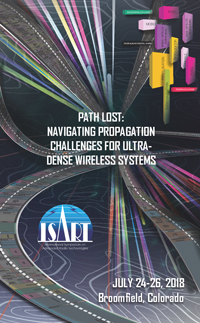ISART 2018 to Examine Propagation Challenges with Ultra-Dense Wireless Systems

Registration is now open for the 17th International Symposium on Advanced Radio Technologies (ISART), which will take place July 24 to 26, 2018, in Broomfield, Colorado. David Redl, Assistant Secretary for Communications and Information and NTIA Administrator, will deliver the opening keynote address. NTIA’s Institute for Telecommunication Sciences (ITS) and NIST’s Communications Technology Laboratory are co-sponsoring the event.
This year’s symposium – Path Lost: Navigating Propagation Challenges for Ultra-Dense Wireless Systems – will explore the current state of the art in radio propagation prediction and map the path forward to the next generation of foundational propagation models. Leading experts from government, academia and industry will explore the technical, economic, and regulatory impacts of network densification in response to the explosion in demand for wireless data.
In the scramble to meet this demand, coexistence, spectrum sharing, and infrastructure-less communications are being introduced as alternatives and adjuncts to fixed frequency assignment and infrastructure-based networks. Innovators, entrepreneurs, and network operators are looking to ultra-dense systems and ever-shrinking cell sizes to build capacity, but existing propagation models have an inadequate level of fidelity to represent these environments.
Detailed knowledge of radiofrequency propagation in these ultra-dense network environments is key to not only building capacity but also regulating in ways that ensure minimal interference and offer appropriate economic incentives. Accurate, reliable, validated, and trusted propagation models that can predict signal strength across a wide variety of environments and conditions are key to navigating the challenges of deploying ultra-dense wireless systems in shared radio spectrum.
The symposium opens Tuesday afternoon with Assistant Secretary Redl’s keynote address, followed by a panel, moderated by NTIA Chief Economist Giulia McHenry, that explores policy implications of improved propagation modeling, discusses economic valuations of improved models, and explores means of coordinating research at the national level. On Tuesday morning ahead of the symposium, the Commerce Spectrum Management Advisory Committee will hold its summer meeting.
On Wednesday, the morning panel will present and discuss vastly improved new tools that have fostered a renaissance in propagation model development and their potential applications and value. That afternoon, Preston Marshall of Google will participate in a “roadside chat” that discusses the transformational possibilities of massive reductions in uncertainty and dramatic increases in modeling precision. Howard McDonald of the Defense Spectrum Organization, Defense Information Systems Agency will talk about DoD spectrum challenges.
How to validate and verify modeling precision is the topic of Thursday’s morning panel, with the afternoon featuring a combination demonstration and hands-on workshop of best practices for capturing the highly accurate propagation measurements that are key to both model development and model validation.
Symposium panelists come from the federal, international, and commercial sides of the issues and include representatives from policymaking offices, federal research labs, industry, and academia.
